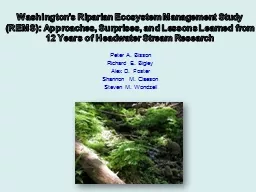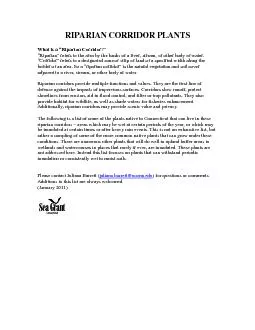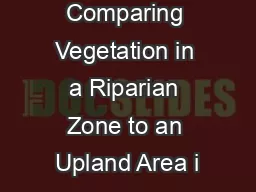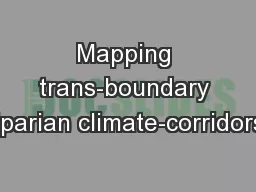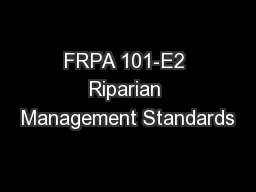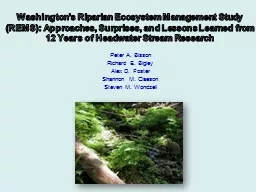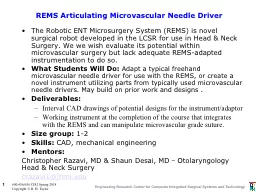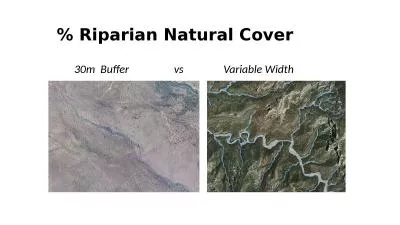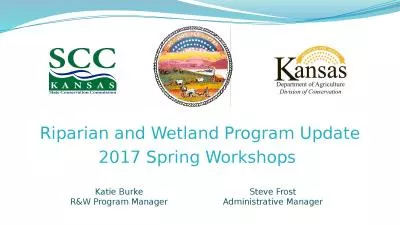PPT-Washington’s Riparian Ecosystem Management Study (REMS):
Author : stefany-barnette | Published Date : 2015-11-08
Peter A Bisson Richard E Bigley Alex D Foster Shannon M Claeson Steven M Wondzell NASA Skokomish Queets Humptulips Clearwater Hoh Sol Duc Hoko Fulton Riparian
Presentation Embed Code
Download Presentation
Download Presentation The PPT/PDF document "Washington’s Riparian Ecosystem Manage..." is the property of its rightful owner. Permission is granted to download and print the materials on this website for personal, non-commercial use only, and to display it on your personal computer provided you do not modify the materials and that you retain all copyright notices contained in the materials. By downloading content from our website, you accept the terms of this agreement.
Washington’s Riparian Ecosystem Management Study (REMS):: Transcript
Download Rules Of Document
"Washington’s Riparian Ecosystem Management Study (REMS):"The content belongs to its owner. You may download and print it for personal use, without modification, and keep all copyright notices. By downloading, you agree to these terms.
Related Documents

